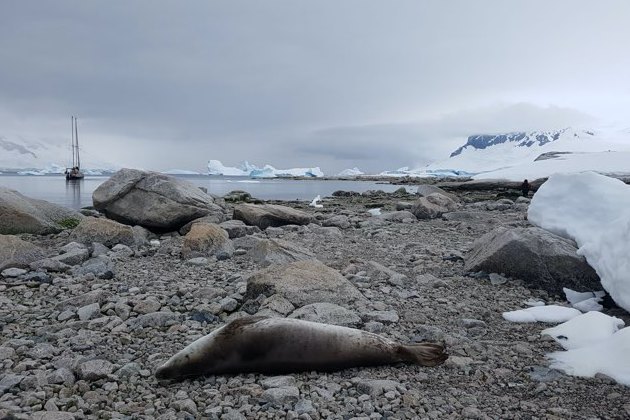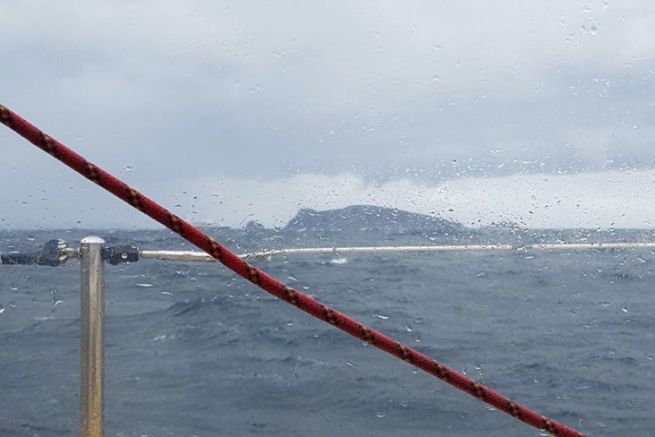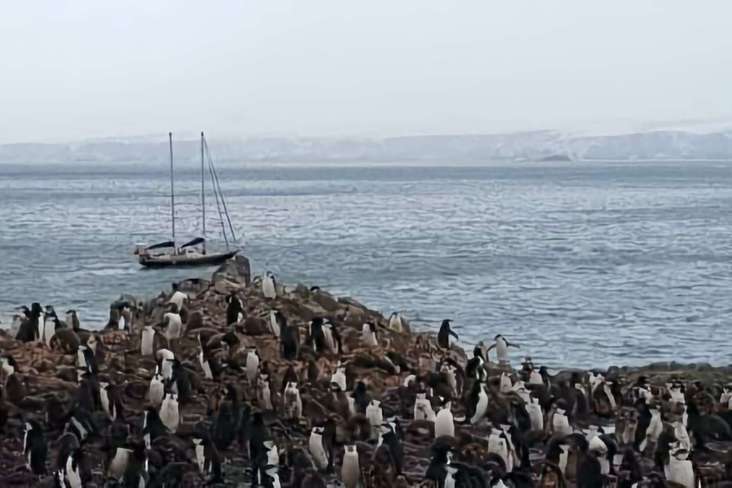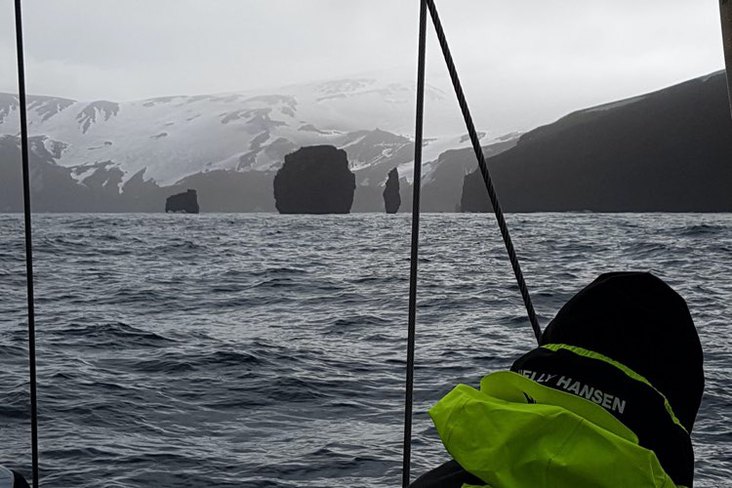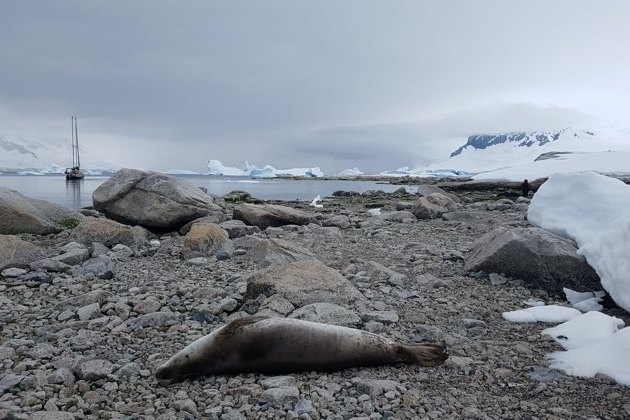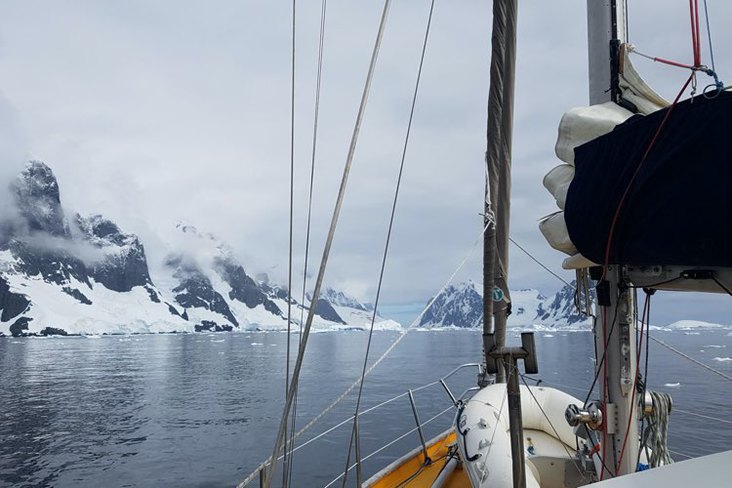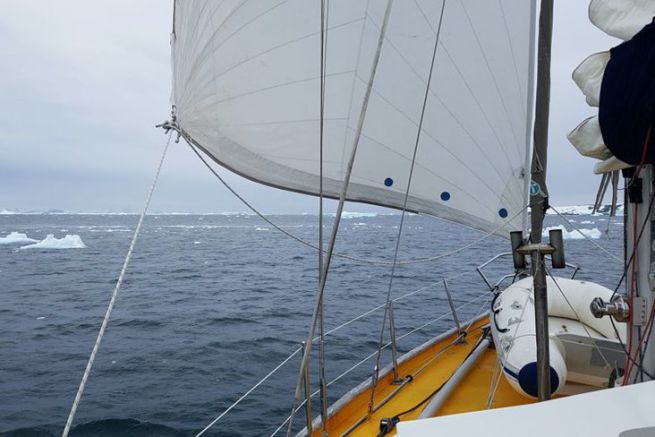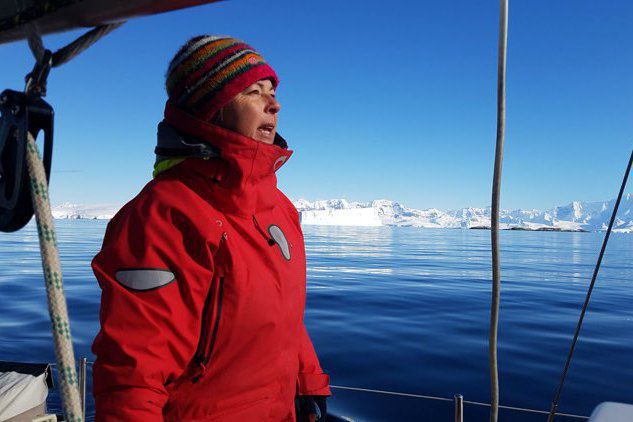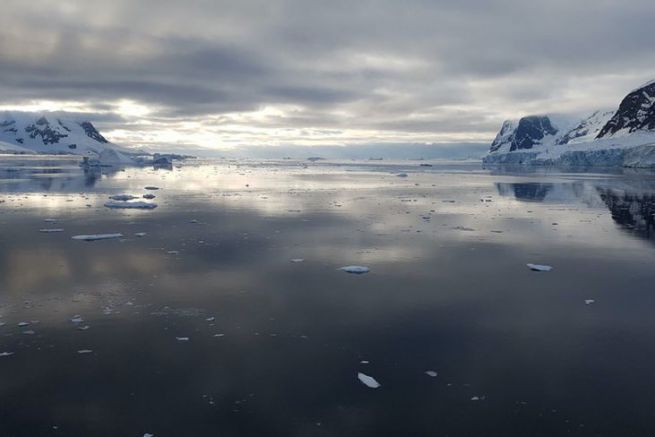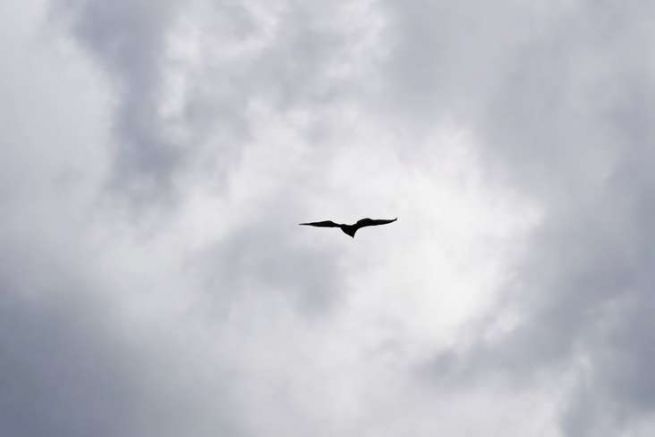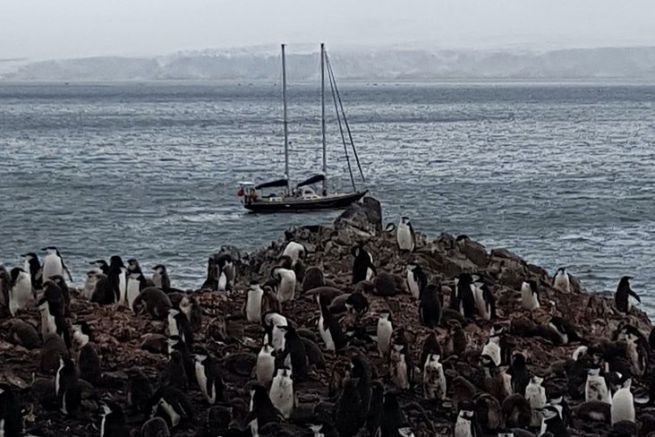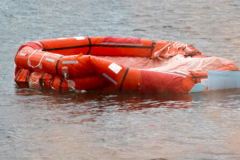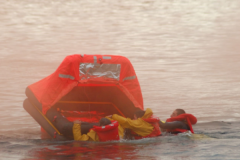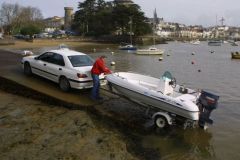In this episode 4, Dominique continues his account of the discovery of Antarctica. After a few anchorages to the north of the peninsula, the sailboat goes down further south, encountering large blocks of ice which sometimes block the way.
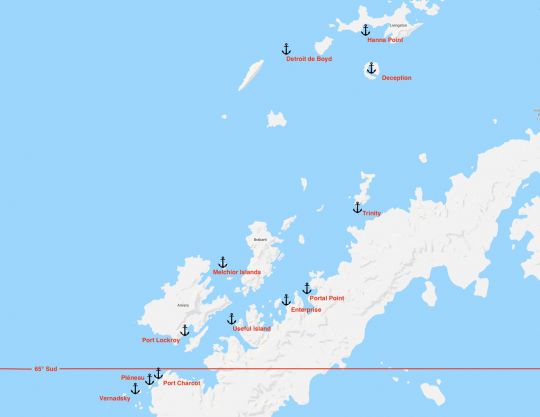
After repairing the windlass which is operational again, we set course for Portal Point, a very nice anchorage a few miles from Enterprise.
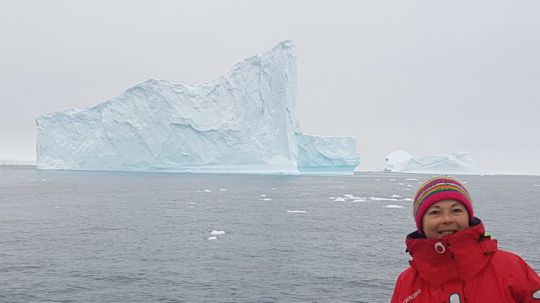
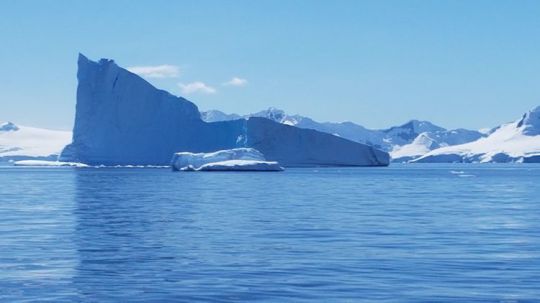
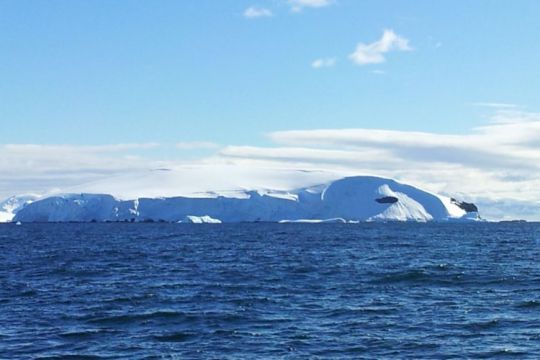
The particularity of this anchorage is that it is closed by a moraine that stops large drifting icebergs, thus providing a safe anchorage area. Only a narrow, shallow channel in the moraine allows a small boat like our sailboat to slip into the protected area. To navigate through it, as in the atolls of the South Pacific, a crew member must be hoisted aloft to distinguish the pass in clear water.
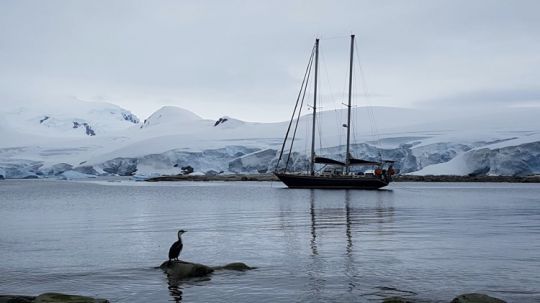
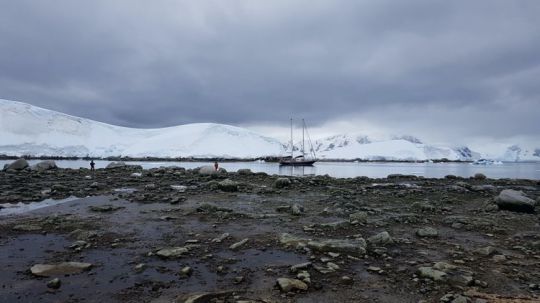
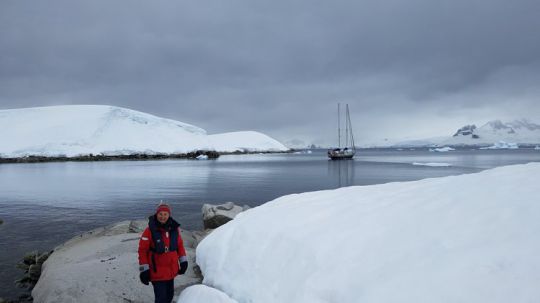
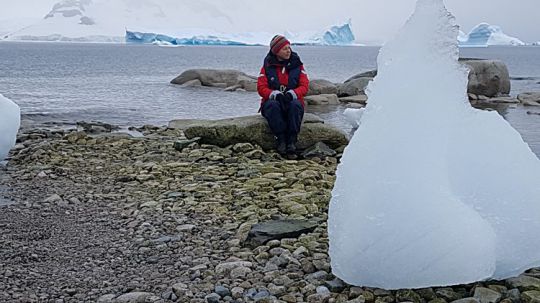
After a few days at Portal Point, we set off for the Chilean base Videla, some thirty miles away via the Cuverville Passage. We encounter a lot of drifting ice along the way and a permanent lookout is essential to guide the helmsman. A lot of whales pass peacefully through this passage.
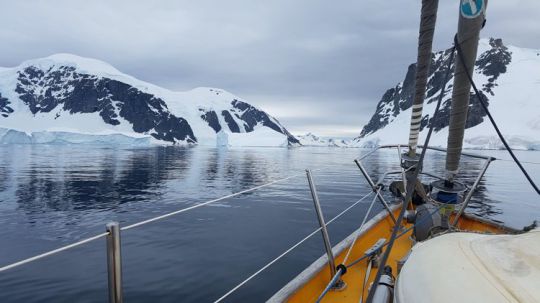
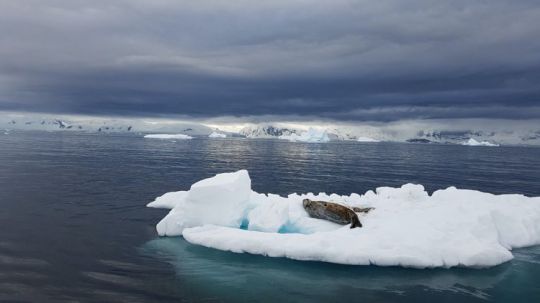
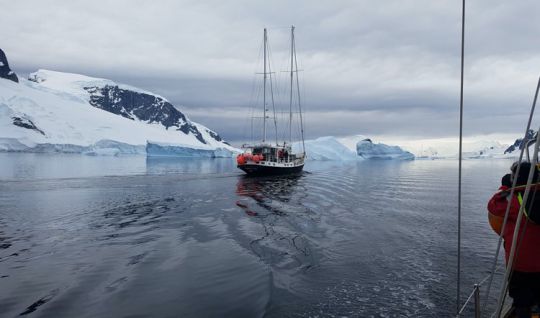
Icebergs dragging the anchor
The anchorage in Videla is again on 4 long moorings struck on rocks on land with steel cables. The big problem is that the tidal currents, combined with the rapidly changing winds, cause large chunks of ice - well in excess of the 20 tons of our yacht - to drift away and get caught in the moorings and threaten to wash everything away just because of their inertia.
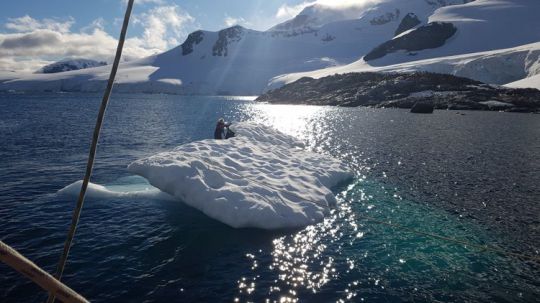
So we spend a good part of the night passing the ice blocks under the moorings, once in one direction, once in the other.
Even with six on board, the night is short, because when the alarm is sounded by the crew member on watch, it is necessary to quickly get dressed, put on shoes, don a lifejacket and board the dinghy to clear the ice, or cast off the mooring lines and retie them once the ice has passed.
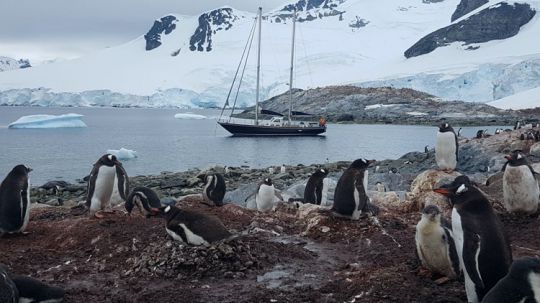
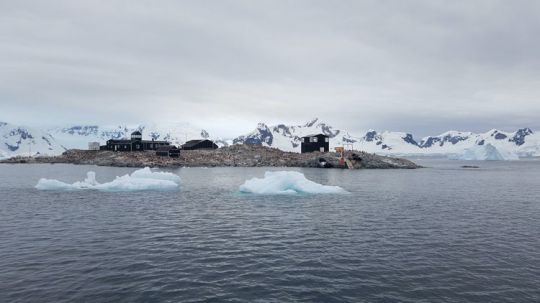
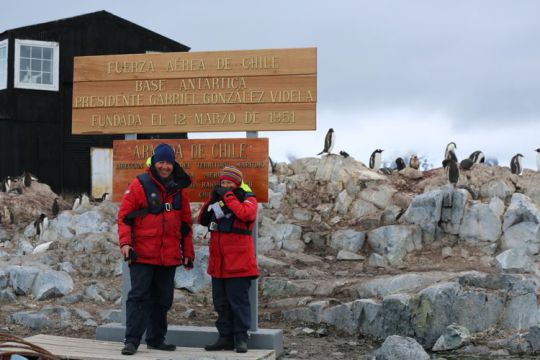
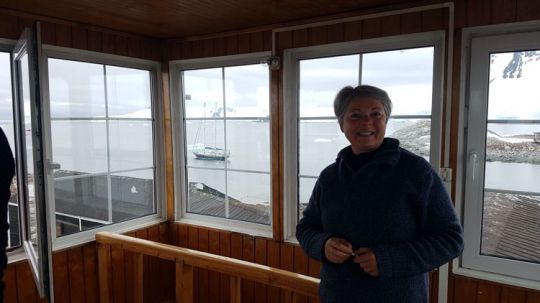
With the threat averted for a while, we'll be greeting the small and very welcoming Chilean team ashore, who will be at the base from December to the end of February. Their comfortable facilities are surrounded by thousands of penguins who take up residence on this rocky island during the 3 summer months to lay their eggs, incubate them and finally migrate with their offspring to more clement latitudes before the great cold of winter. The noise level of a "roquerie" - and its pestilence - is astonishing, but you get used to it as these animals are so friendly. Videla even has one of the few known "leucystic" penguins. And then there are also big elephant seals, which sometimes settle comfortably in the big Zodiac at the base on land. No question of chasing them away: they are much too big, and their jaws too impressive!
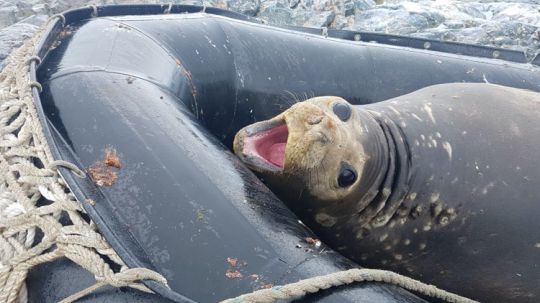
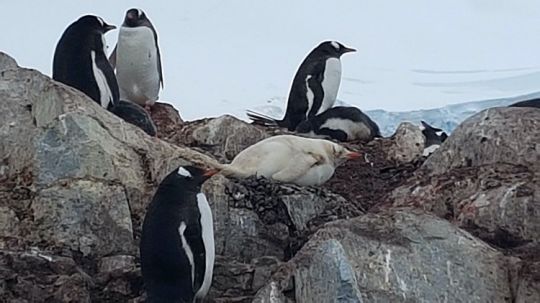
Life jackets that are useless!
As we tread on Videla's floor, a small unidentified object detaches from Carole's life jacket. " Let's see Carol." wrote the captain, " you're losing your inflation cartridge! ". On our own boat, we stick to the "old-fashioned" foam lifejackets - with no cartridges to be replaced regularly or subject to unpredictable malfunction. When we put on the self-inflating life jackets on board for this Antarctic cruise, we didn't have the idea of reviewing them. It's a mistake! When we look at them more closely, we can see that almost all the lifejackets used up to now have the same problem: the CO2 cartridge, which allows the vest to inflate when it is hit, doesn't fit on the firing pin. This is simply not the right type of cartridge.

We have been scrupulously wearing our life jackets for more than 15 days now, both during manoeuvres on the high seas, and during anchoring manoeuvres where we have to quickly hit mooring lines ashore (and during which we quickly find ourselves in the water), or simply when we are moving around in a dinghy. And we find by chance that our life jackets are perfectly useless! In waters close to 0 degrees, these lifejackets are indispensable, because syncope, in the event of a fall overboard, is very rapid and only keeping the victim out of the water will allow the rest of the crew to recover. Back on board, the captain spends the rest of the day gathering all the vests in stock to make 6 of them functional. The others are discarded.
To be continued..
